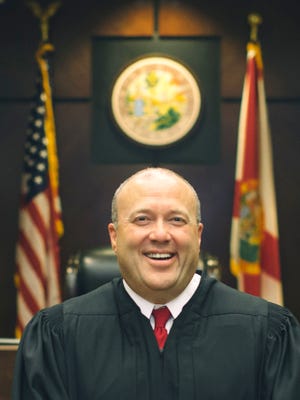Who shot JFK? Part 5: Follow the bullets’ trajectory | Ask Judge Smith
J. Layne Smith

Dwight Eisenhower was a pillar of leadership and stability. He served as the Supreme Commander, leading the Allies to victory over Hitler and the Axis powers, and served eight years as President. As such, he was a hard act to follow.
John F. Kennedy entered the 1960 presidential race with two perceived strikes against him. He was young and Catholic. On Nov. 8, 1960, Kennedy defeated Richard M. Nixon by the slimmest of margins. Garnering less than 50% of the votes cast, Kennedy lacked a national mandate, and he stumbled out of the gate having to weather the Bay of Pigs fiasco.
By October of 1963, Kennedy was thinking about the 1964 election cycle, which he expected to be another close contest. Both the President and First Lady had charisma and movie star good looks.
The entire point of his campaign swing through Texas was to create a buzz, which explains why he chose to ride through Dallas in an open convertible. Kennedy caused additional media attention by inviting Texas Governor John Connally and his wife Nellie to ride with them.
Connally was the taller man. Desiring prominence, Kennedy’s staff modified the convertible by installing a front passenger jump seat. This action assured that Governor and Mrs. Connally were seated below and to the President’s left. This adjustment accounted for the difference in the men’s height and perfectly aligned them to suffer wounds from Oswald’s second shot.
Now, let’s dispel the myths surrounding Oswald’s second shot. Abraham Zapruder’s 8mm film captured 26 seconds of screen time that breaks down into 486 still frames. 2.25 seconds elapses over 40.5 frames. Why does this matter?
Because gun experts determined an assassin using Oswald’s gun could not fire two rounds in less than 2.25 seconds, and Kennedy and Connally were each struck closer in time. Thus, unless the same bullet hit both men, two shooters fired shots.
Oswald’s second shot struck Kennedy at the base of his neck, causing an entry wound measuring 6.5 mm, the bullet’s diameter. The bullet’s nose hit soft tissue only, grazed his sixth cervical vertebra’s tip, and caused him to suffer “blast injury trauma.” Brushing by Kennedy’s spine did not deform the bullet’s nose, but it did cause the slug to start tumbling. The projectile was turning sideways when it tore a gaping exit wound in his throat.
Next, in precise alignment, the bullet struck Connally in the back. We know the bullet hit him sideways rather than point first because the entry wound measured 1.25 inches —the slug’s length. The force of it powdered one of Connally’s ribs and exited his body below his right nipple, still traveling sideways. Next, the bullet shattered Connally’s right wrist before it partially lodged in the fleshy part of his thigh.
Conspiracy buffs contend that the bullet found on Connally’s hospital stretcher could not have wounded both men because its nose remained intact. However, these skeptics have overlooked the reason.
The bullet’s nose did not deform because it never struck any hard surface straight on. Instead, the slug was moving sideways when it hit bones, and the bullet’s circumference, rather than its nose, flattened as if squeezed in a vice.
The evidence, backed by forensics and the Zapruder film, proves Oswald’s second shot wounded both men. Next, let’s cover Oswald’s kill shot and the other murder he committed that day.
The Honorable J. Layne Smith is a Circuit Judge and author of “Civics, Law, and Justice—How We Became U.S.” Send your questions to askjudgesmith@gmail.com.
Never miss a story: Subscribe to the Tallahassee Democrat using the link at the top of the page.
*** This article has been archived for your research. The original version from Tallahassee Democrat can be found here ***


